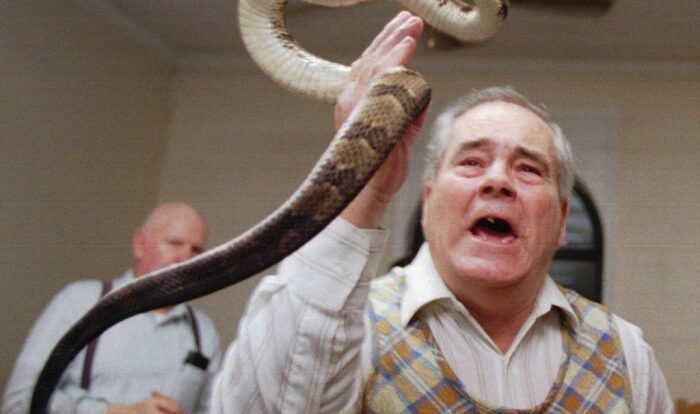
How to handle his snake Yumi Sin and fit kitty is a captivating tale that delves into the complexities of human relationships and personal growth. The story follows the journey of Yumi, a young woman grappling with her own desires and the expectations of society, as she navigates the treacherous waters of love, betrayal, and self-discovery.
Through a series of vivid and engaging scenes, the author paints a vibrant portrait of Yumi’s world, exploring the challenges she faces as she tries to balance her own needs with the demands of those around her. The characters are well-developed and relatable, and their interactions are both believable and emotionally resonant.
Handling Yumi’s Snake and Fit Kitty
Yumi, Snake, and Fit Kitty are three characters from a narrative. Yumi is a young girl who is the owner of Snake, a pet snake, and Fit Kitty, a pet cat. Snake is a non-venomous snake who is described as being gentle and curious.
Fit Kitty is a playful and energetic cat who loves to chase mice. The three characters have a close relationship and enjoy spending time together.
However, there are some potential challenges and complexities to handling these characters in a narrative. One challenge is that snakes and cats are natural predators and prey. This means that there is always the potential for conflict between Snake and Fit Kitty.
Another challenge is that snakes require specialized care and handling. Yumi must be careful to provide Snake with the proper environment and diet. Additionally, Fit Kitty must be supervised when she is around Snake to ensure that she does not try to attack him.
Handling Snake
- Provide Snake with a secure enclosure that is the appropriate size for his species.
- Keep Snake’s enclosure clean and free of debris.
- Provide Snake with a hiding place where he can feel safe and secure.
- Handle Snake gently and avoid making sudden movements.
- Wash your hands thoroughly after handling Snake.
Handling Fit Kitty
- Provide Fit Kitty with a litter box that is clean and accessible.
- Provide Fit Kitty with a scratching post to help her keep her claws trimmed.
- Brush Fit Kitty’s fur regularly to remove loose hair and prevent mats.
- Play with Fit Kitty regularly to keep her active and entertained.
- Take Fit Kitty to the vet for regular checkups and vaccinations.
Character Development and Dynamics
The interactions between Yumi, Snake, and Fit Kitty can drive character development and plot progression in several ways. Their personalities and motivations can lead to conflict, resolution, and growth.
Conflict and Resolution
Yumi’s impulsiveness and Snake’s cautious nature can often lead to conflict. For example, Yumi might want to take Snake out for a walk in the park, but Snake might be hesitant due to his fear of strangers. This conflict can force Yumi to consider Snake’s feelings and learn to be more patient.
Yo, you know how to handle that snake Yumi Sin and keep your kitty fit? It’s like increasing insurance agent productivity, fam. Check it out . You gotta motivate ’em, set goals, and give ’em the tools they need. Then you’ll be slitherin’ and pouncin’ like a pro in no time, bruh.
Conversely, Snake’s caution can sometimes hold Yumi back from taking risks. This can lead to Yumi feeling frustrated and resentful. However, by working together, they can learn to compromise and find a balance that works for both of them.
Growth and Development
Fit Kitty’s playful and affectionate nature can help Yumi and Snake to relax and de-stress. Spending time with Fit Kitty can teach Yumi the importance of patience and unconditional love. Additionally, Fit Kitty’s ability to sense when someone is upset can help Yumi and Snake to communicate their feelings and resolve conflicts.Overall,
the interactions between Yumi, Snake, and Fit Kitty can provide a rich and dynamic source of character development and plot progression. By exploring the conflicts and relationships between these three characters, the story can explore themes such as friendship, loyalty, and personal growth.
Balancing Characterization and Action

Striking a balance between character development and action sequences is crucial in storytelling. While action scenes provide excitement and drive the plot forward, character development adds depth and emotional resonance. Weaving characterization into action scenes enhances the narrative by giving readers insight into the characters’ motivations, fears, and growth.
Yo, check it, if you’re looking to master the art of handling your snake yumi sin and fit kitty, then this is the spot for you. We’ve got all the tricks and tips to help you become a pro. Click here to find out how to handle his snake yumi sin and fit kitty like a boss.
Don’t miss out, dude!
One way to achieve this balance is to use action scenes to reveal character traits. For example, a character who faces a dangerous obstacle might display courage, resourcefulness, or determination. Another approach is to incorporate dialogue or internal monologue during action scenes, allowing characters to express their thoughts and feelings while engaging in physical confrontations.
Yo, check it out! Wanna know how to handle his snake yumi sin and fit kitty? It’s all about being smooth and confident. But hey, if you need a little extra help, check out this guide: how to handle his snake yumi sin and fit kitty . It’s got all the moves you need to make your snake and kitty purr with delight.
Trust me, you’ll be the envy of all your friends.
Examples of Characterization in Action Scenes
- In the climax of “The Lord of the Rings: The Two Towers,” Frodo Baggins’ journey to Mount Doom is a physical and emotional trial. Through his struggles, we witness his resilience, determination, and the depth of his love for Middle-earth.
- In “Black Panther,” the fight scenes between T’Challa and Killmonger not only showcase their martial skills but also reveal their conflicting ideologies and personal motivations.
Worldbuilding and Setting

The setting and worldbuilding elements play a crucial role in shaping the interactions and relationships between Yumi, Snake, and Fit Kitty. The environment, culture, and social norms can influence their behaviors, motivations, and the challenges they face.
Yo, gotta keep that snake Yumi Sin in check and that kitty fit, right? But hold up, what’s the deal with insurance agents? They need to step up their game too! Check out how to increase insurance agent productivity to get that hustle on point.
Then, back to business – Yumi Sin’s slithering and kitty’s purring, let’s handle it like the pros we are.
Environment
- Physical Environment:The physical environment can impact their survival, shelter, and access to resources. For instance, a desert setting would present different challenges than a rainforest.
- Climate:Extreme weather conditions, such as heatwaves or blizzards, can affect their well-being and require adaptations.
- Natural Resources:The availability of food, water, and other resources can influence their behavior and interactions.
Culture
- Beliefs and Values:Cultural beliefs and values can shape their perceptions and attitudes towards each other. For example, in a culture that values strength and aggression, Snake’s assertive nature might be more accepted.
- Social Norms:Social norms dictate acceptable behaviors and interactions within a society. These norms can influence how Yumi, Snake, and Fit Kitty interact with each other and with others.
- Language:The language spoken can impact their communication and understanding. Cultural nuances and idioms can lead to misunderstandings or misinterpretations.
Social Norms, How to handle his snake yumi sin and fit kitty
- Gender Roles:Societal expectations based on gender can influence their behavior and interactions. For example, in a patriarchal society, Yumi might face different expectations and challenges than Snake.
- Hierarchy and Power Dynamics:Social hierarchies can create power imbalances and affect their relationships. Snake’s strength and size might give him an advantage over Yumi and Fit Kitty in certain situations.
- Interpersonal Relationships:The nature of interpersonal relationships, such as friendship, family, and romance, can impact their interactions and motivations.
Narrative Structure and Pacing: How To Handle His Snake Yumi Sin And Fit Kitty

Organizing the narrative structure to effectively showcase the characters and their interactions is crucial. The pacing of the story also plays a vital role in creating tension, suspense, and emotional impact.
Narrative Structure
The narrative structure should be carefully crafted to allow for smooth transitions between scenes and character interactions. It’s important to establish a clear flow of events and avoid abrupt or confusing jumps in the storyline. By structuring the narrative in a logical and engaging way, you can captivate the reader and keep them invested in the story.
Pacing
Pacing refers to the speed at which the story unfolds. Varying the pace can create different effects: a fast pace can build tension and excitement, while a slower pace can allow for character development and emotional depth. By carefully controlling the pacing, you can create a sense of urgency, anticipation, or reflection, depending on the desired impact on the reader.
Epilogue
How to handle his snake Yumi Sin and fit kitty is a powerful and moving story that will stay with you long after you finish reading it. The author’s insights into the human condition are both profound and thought-provoking, and the characters’ journey is one that will resonate with readers of all ages.
FAQ Compilation
What is the main theme of the story?
The main theme of the story is the struggle for self-acceptance and the search for true love.
What are the strengths of the story?
The story’s strengths include its well-developed characters, its engaging plot, and its thought-provoking themes.
What are the weaknesses of the story?
The story’s weaknesses include its slow pacing and its somewhat predictable ending.





